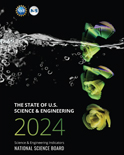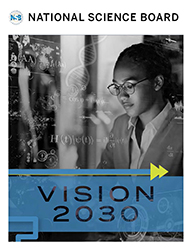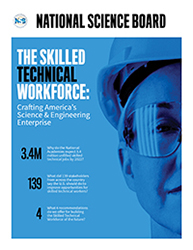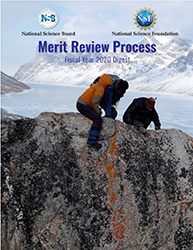National Science Board Vision 2030 Task Force
Committee Members
| Chair: | Roger Beachy |
| Members: |
Vicki Chandler |
| Executive Secretaries: | Theresa Good Mary Koskinen |
| NSBO Staff: | Kathy Jacquart |
Charge
The National Science Board (NSB; Board) Vision 2030 Task Force is established and charged to coordinate the development of a Vision that will help guide the Board and the National Science Foundation (NSF) through 2030. The goal of the Vision is also to increase support for and impact of investments in fundamental science and engineering research (S&E) and a STEM-educated workforce.
In fulfilling this charge, the Task Force is expected to plan activities to gather input and perspective from the rest of the Board, NSF leadership and staff, and relevant stakeholders within and outside the government.
Statutory Basis
“…the Board shall establish the policies of the Foundation, within the framework of applicable national policies as set forth by the President and the Congress.” [42 U.S.C. § 1863(a)]
“The Board shall render to the President and the Congress reports on specific, individual policy matters within the authority of the Foundation (or otherwise as requested by the Congress or the President) related to science and engineering and education in science and engineering, as the Board, the President, or the Congress determines the need for such report.” [42 U.S.C. § 1863(j)(2)]
Rationale
The Board has two roles: 1) It establishes the policies of NSF within the framework of applicable national policies set forth by the President and the Congress. In this capacity, the Board identifies issues that are critical to NSF's future, approves NSF's strategic budget directions and the annual budget submission to the Office of Management and Budget, and approves new major programs and awards; and 2) it serves as an independent body of advisors to both the President and the Congress on policy matters related to science and engineering and education in science and engineering.
In 2005, the Board published National Science Board 2020 Vision for the National Science Foundation, which provided a vision statement for NSF and strategic priorities, near-term goals and enabling strategies for achieving the vision. Given the changes in the S&E landscape since 2005, including changing demographics; new technologies; stresses faced by higher education institutions; and a progressively more global S&E system that includes new competition and opportunities for collaboration; in November 2018, the NSB decided to develop a new Vision that will help guide the Board and NSF through 2030.The NSB Vision 2030 will speak to both dimensions of the Board’s charge by:
- serving as a lodestar that guides NSB and NSF actions and priorities and provides a foundation for Congress and the public to support NSF as it fulfills its mission;
- identifying and framing specific opportunities and challenges and providing inspiration and guidance for the longer-term work of the NSB and NSF;
- articulating a compelling message of what NSF does and why it matters to the US, its citizens, and the world;
- helping NSB and NSF continue to think boldly and long term, be aspirational, and be proactive; and
- as a component of Board risk management, allowing the Board and NSF to consider broader changes in the S&E/educational landscape that impact the Foundation’s ability to fulfill its mission.
Duration of the Task Force
The Task Force is expected to complete its activities within 11 months of approval of this Charge. The Task Force is also expected to coordinate the involvement of other Board members in the development of the Vision and provide the NSB with periodic updates on its progress. The NSB plans to complete the Vision in February 2020.




